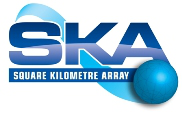Dr
Stefan Wijnholds
(ASTRON)
25/07/2011, 13:00
Phased array feed (PAF) systems provide a much larger field-of-view than single pixel feeds thereby considerably improving the survey speeds achievable with reflector dishes.
PAF systems also provide the flexibility to adaptively change the primary beams of the telescope, for example for interference suppression.
One of the main worries from a self-calibration and imaging perspective is that...
Prof.
Christophe Craeye
(Université Catholique Louvain)
25/07/2011, 13:40
The main differences between patterns in non-regular arrays and in continuous apertures will be reviewed.
Mathematical tools generally used for radiation from apertures will be applied to non-regular arrays and the convergence versus number of terms will be illustrated.
Comments will be provided on the applicability of the method in the presence of mutual coupling.
Dr
Tobia Carozzi
(Onsala Space Observatory, Chalmers University, Sweden)
25/07/2011, 14:40
There is a widespread myth in radio astronomy that says that complete knowledge of antenna beam gains will lead to perfect calibration and hence, perfect images.
I show that this is almost never true in practice.
I will present a fundamental bound on the error of fully calibrated data.
This "error bar" on the final image shows that even for completely known gains, there is, in addition to...
Dr
Maxim Voronkov
(CSIRO Astronomy and Space Science)
25/07/2011, 15:20
The Australian Square Kilometre Array Pathfinder (ASKAP) is fundamentally a real-time telescope given the data rate from the correlator to the central processor of 2.5 GB/s.
The calibration pipelines have to keep up with observations and produce a solution on time scales shorter than the time required for calibration data acquisition.
We have previously prototyped the calibration pipelines...

